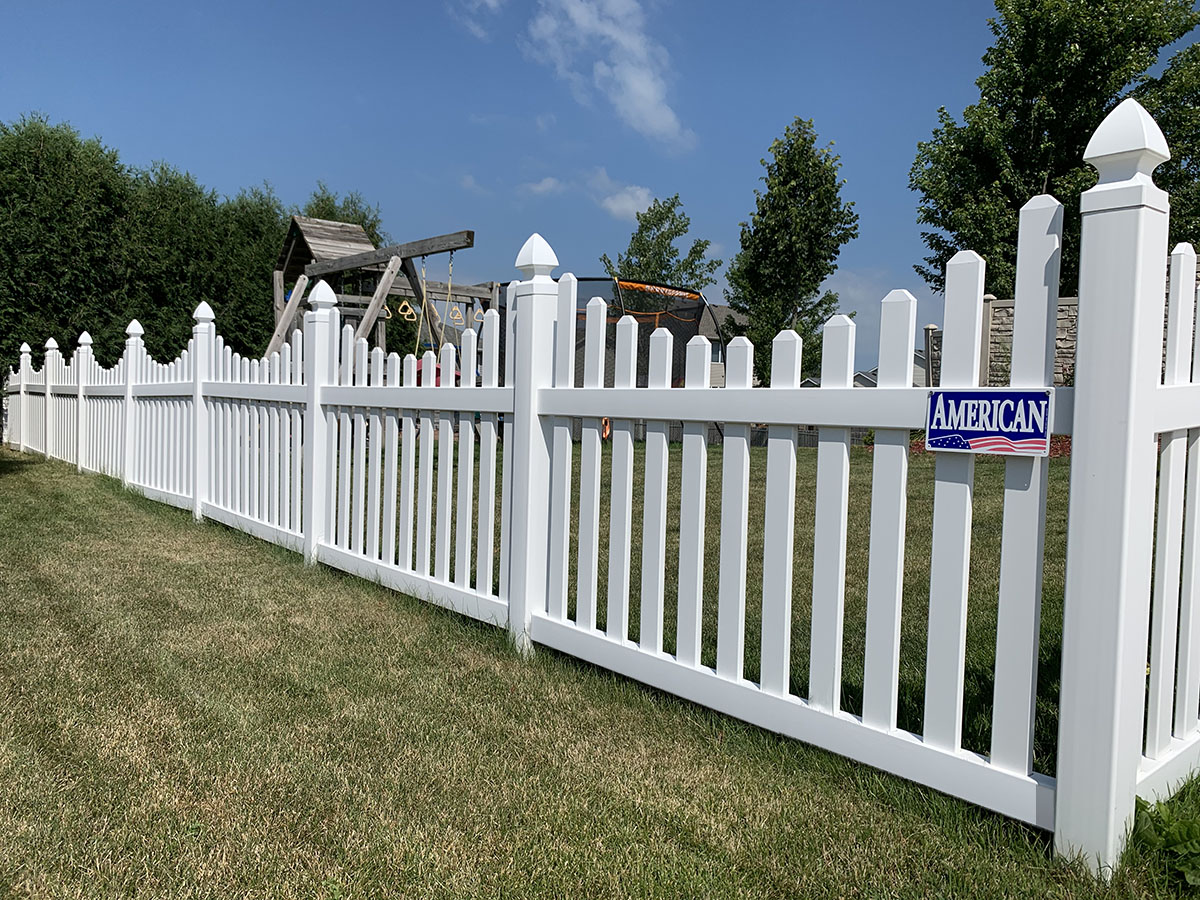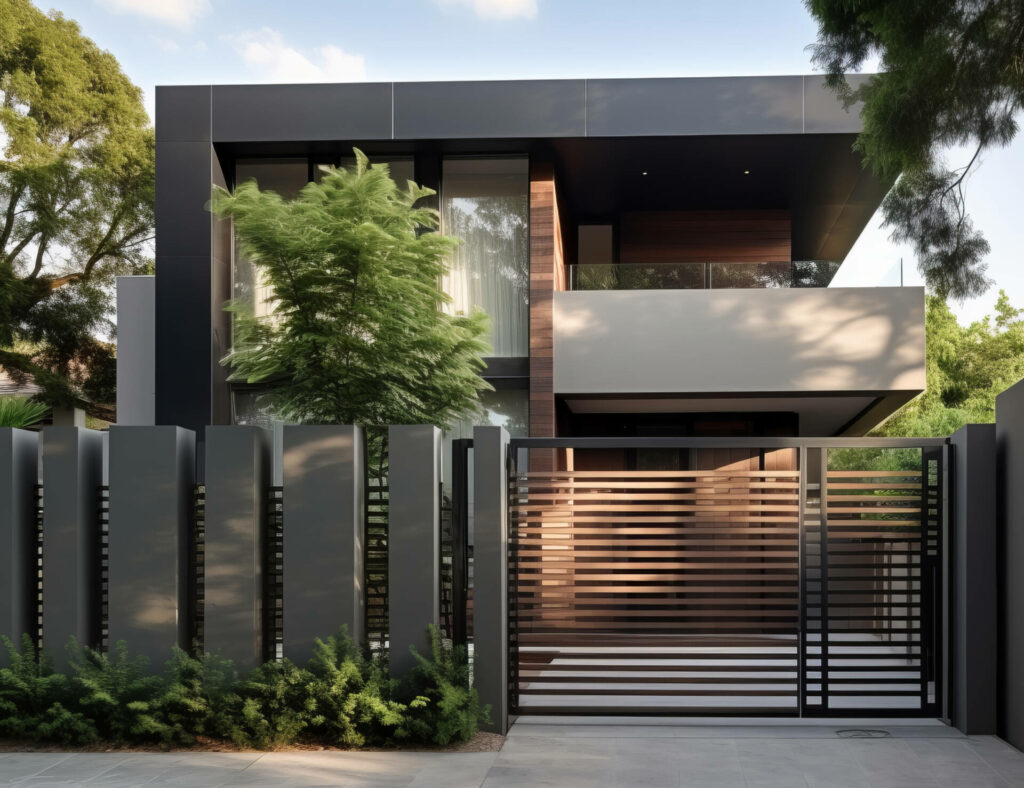All Categories
Featured
When picking a fencing for your residential or commercial property, it's vital to consider variables like price, sturdiness, upkeep, and visual allure. Three of one of the most prominent products for residential and business fences are light weight aluminum, plastic, and timber. Each offers distinct benefits and some drawbacks, making it crucial to evaluate your demands prior to deciding. Listed below, we contrast the benefits and drawbacks of these products to aid guide your option.
Wood Fencing. Pros:
![]()
All-natural Visual: Wood fences are known for their timeless, all-natural appearance. They can easily blend into many landscapes and improve the appeal of your home or organization. Whether you're going for a rustic look or an extra sleek finish, wood can be customized with paint, stain, or sealer. Modification: Wood is one of one of the most flexible products, permitting a wide range of designs, such as picket fencings, privacy fences, and ranch-style rooms. It's simple to adjust the design to fit the certain demands of your residential property. Inexpensive: Normally, wood fencings come at a lower initial expense compared to vinyl or aluminum, making them an affordable option for those on a budget plan. Cons:
Maintenance Needs: Timber fences need routine maintenance to maintain their appeal and performance. This consists of staining or paint to shield against rot, termites, and weather damage. Without appropriate treatment, timber can weaken with time. Much Shorter Life Expectancy: Contrasted to vinyl or aluminum, timber fencings have a tendency to have a shorter life-span, especially in areas with extreme weather. Rough problems, such as hefty rainfall, moisture, or snow, can trigger wood to weaken quicker. Prone to Damage: Wood fences are at risk to damage from insects, including termites, in addition to natural wear from weather condition. They may also warp or crack otherwise properly kept. Plastic Fencing. Pros:
Low Upkeep: Among the main benefits of vinyl fences is that they call for marginal maintenance. Unlike timber, plastic doesn't need to be painted, sealed, or stained. It's immune to fading, staining, and fracturing, which conserves time and cash on maintenance. Longevity: Plastic is understood for its ability to endure extreme weather without wearing away. It's unsusceptible insects like termites, and its resistance to dampness and UV rays guarantees it remains looking great for years. Resilient: A plastic fencing can last up to 30 years or even more, making it a fantastic long-lasting investment. Many makers offer warranties, even more enhancing its value. Selection of Styles: Plastic fencings are readily available in numerous shades and designs, consisting of those that simulate wood. You can select from personal privacy, picket, or attractive styles, providing adaptability to match your home or business. Disadvantages:
![]()
Greater Upfront Cost: Plastic fencings tend to have a higher first price than wood. While the long-lasting savings on maintenance are significant, the in advance investment might be a deterrent for some home owners. Restricted Personalization: Plastic fences can be found in typical layouts, and while styles and shades are different, you might not have as much versatility for personalization compared to timber. Fracturing in Cold Climates: While plastic is sturdy, in very cold environments, it can come to be breakable and fracture upon effect, which can be problematic in locations with rough winters. Light weight aluminum Secure fencing. Pros:
Low Upkeep: Light weight aluminum fences are recognized for their low-maintenance demands. Unlike timber, light weight aluminum does not corrosion or wear away, and it doesn't need to be repainted or sealed. This makes it a terrific selection for those that desire an easy choice. Longevity and Stamina: Light weight aluminum is a durable material that stands well to harsh climate condition. It's an excellent choice for coastal locations where saltwater corrosion is a concern, as it's resistant to rust. Aesthetic Appeal: Aluminum fences use a clean, stylish appearance, typically used for ornamental functions. They're available in numerous styles, consisting of ornamental layouts, and can include a premium feel to your building. Security: Light weight aluminum fencings are sturdy and deal great protection, especially when installed with gateways or locks. Their sturdy building gives a trusted barrier versus unwanted access. Disadvantages:
![]()
Greater Initial Cost: Aluminum fences tend to be extra costly than wood, especially if you decide for ornamental layouts. The upfront price might be excessive for some. Much Less Personal privacy: Light weight aluminum fencings normally have bigger voids between the slats, which implies they supply much less privacy than wood or vinyl fences. If seclusion is a top priority, aluminum might not be the ideal choice. Nicking Concerns: While light weight aluminum is rust-resistant, it is susceptible to denting or flexing if struck with force. As an example, an automobile mishap or hefty effect can trigger enduring damage to the fence. Which Fence Material is Right for You? Selecting the best fence depends on numerous variables, including your spending plan, design preferences, maintenance ability, and the setting in which you live. If you desire an all-natural look and are gotten ready for routine maintenance, wood could be the right alternative. Vinyl is a wonderful selection if low-maintenance and long life are your concerns. For those that favor a sleek, modern-day look with marginal treatment, light weight aluminum provides a long-lasting, protected solution.
Ultimately, each secure fencing material has its benefits and drawbacks, so it is very important to examine what matters most for your details requirements. Think about the climate, the degree of privacy you need, and just how much maintenance you want to commit to, and you'll find the perfect fencing for your residential or commercial property.
Wood Fencing. Pros:

All-natural Visual: Wood fences are known for their timeless, all-natural appearance. They can easily blend into many landscapes and improve the appeal of your home or organization. Whether you're going for a rustic look or an extra sleek finish, wood can be customized with paint, stain, or sealer. Modification: Wood is one of one of the most flexible products, permitting a wide range of designs, such as picket fencings, privacy fences, and ranch-style rooms. It's simple to adjust the design to fit the certain demands of your residential property. Inexpensive: Normally, wood fencings come at a lower initial expense compared to vinyl or aluminum, making them an affordable option for those on a budget plan. Cons:
Maintenance Needs: Timber fences need routine maintenance to maintain their appeal and performance. This consists of staining or paint to shield against rot, termites, and weather damage. Without appropriate treatment, timber can weaken with time. Much Shorter Life Expectancy: Contrasted to vinyl or aluminum, timber fencings have a tendency to have a shorter life-span, especially in areas with extreme weather. Rough problems, such as hefty rainfall, moisture, or snow, can trigger wood to weaken quicker. Prone to Damage: Wood fences are at risk to damage from insects, including termites, in addition to natural wear from weather condition. They may also warp or crack otherwise properly kept. Plastic Fencing. Pros:
Low Upkeep: Among the main benefits of vinyl fences is that they call for marginal maintenance. Unlike timber, plastic doesn't need to be painted, sealed, or stained. It's immune to fading, staining, and fracturing, which conserves time and cash on maintenance. Longevity: Plastic is understood for its ability to endure extreme weather without wearing away. It's unsusceptible insects like termites, and its resistance to dampness and UV rays guarantees it remains looking great for years. Resilient: A plastic fencing can last up to 30 years or even more, making it a fantastic long-lasting investment. Many makers offer warranties, even more enhancing its value. Selection of Styles: Plastic fencings are readily available in numerous shades and designs, consisting of those that simulate wood. You can select from personal privacy, picket, or attractive styles, providing adaptability to match your home or business. Disadvantages:

Greater Upfront Cost: Plastic fencings tend to have a higher first price than wood. While the long-lasting savings on maintenance are significant, the in advance investment might be a deterrent for some home owners. Restricted Personalization: Plastic fences can be found in typical layouts, and while styles and shades are different, you might not have as much versatility for personalization compared to timber. Fracturing in Cold Climates: While plastic is sturdy, in very cold environments, it can come to be breakable and fracture upon effect, which can be problematic in locations with rough winters. Light weight aluminum Secure fencing. Pros:
Low Upkeep: Light weight aluminum fences are recognized for their low-maintenance demands. Unlike timber, light weight aluminum does not corrosion or wear away, and it doesn't need to be repainted or sealed. This makes it a terrific selection for those that desire an easy choice. Longevity and Stamina: Light weight aluminum is a durable material that stands well to harsh climate condition. It's an excellent choice for coastal locations where saltwater corrosion is a concern, as it's resistant to rust. Aesthetic Appeal: Aluminum fences use a clean, stylish appearance, typically used for ornamental functions. They're available in numerous styles, consisting of ornamental layouts, and can include a premium feel to your building. Security: Light weight aluminum fencings are sturdy and deal great protection, especially when installed with gateways or locks. Their sturdy building gives a trusted barrier versus unwanted access. Disadvantages:

Greater Initial Cost: Aluminum fences tend to be extra costly than wood, especially if you decide for ornamental layouts. The upfront price might be excessive for some. Much Less Personal privacy: Light weight aluminum fencings normally have bigger voids between the slats, which implies they supply much less privacy than wood or vinyl fences. If seclusion is a top priority, aluminum might not be the ideal choice. Nicking Concerns: While light weight aluminum is rust-resistant, it is susceptible to denting or flexing if struck with force. As an example, an automobile mishap or hefty effect can trigger enduring damage to the fence. Which Fence Material is Right for You? Selecting the best fence depends on numerous variables, including your spending plan, design preferences, maintenance ability, and the setting in which you live. If you desire an all-natural look and are gotten ready for routine maintenance, wood could be the right alternative. Vinyl is a wonderful selection if low-maintenance and long life are your concerns. For those that favor a sleek, modern-day look with marginal treatment, light weight aluminum provides a long-lasting, protected solution.
Ultimately, each secure fencing material has its benefits and drawbacks, so it is very important to examine what matters most for your details requirements. Think about the climate, the degree of privacy you need, and just how much maintenance you want to commit to, and you'll find the perfect fencing for your residential or commercial property.
Latest Posts
Don’t Miss Exclusive Auto Repair Offers in Chicago at Montclare Auto Repair
Published en
1 min read
Check Out the Best Auto Repair Offers in Montclare, Chicago
Published en
1 min read
Learn About Premier Auto Repair Care at Montclare Auto Repair – Expert Care for Your Vehicle
Published en
1 min read
More
Latest Posts
Don’t Miss Exclusive Auto Repair Offers in Chicago at Montclare Auto Repair
Published May 25, 25
1 min read
Check Out the Best Auto Repair Offers in Montclare, Chicago
Published May 24, 25
1 min read
Learn About Premier Auto Repair Care at Montclare Auto Repair – Expert Care for Your Vehicle
Published May 24, 25
1 min read